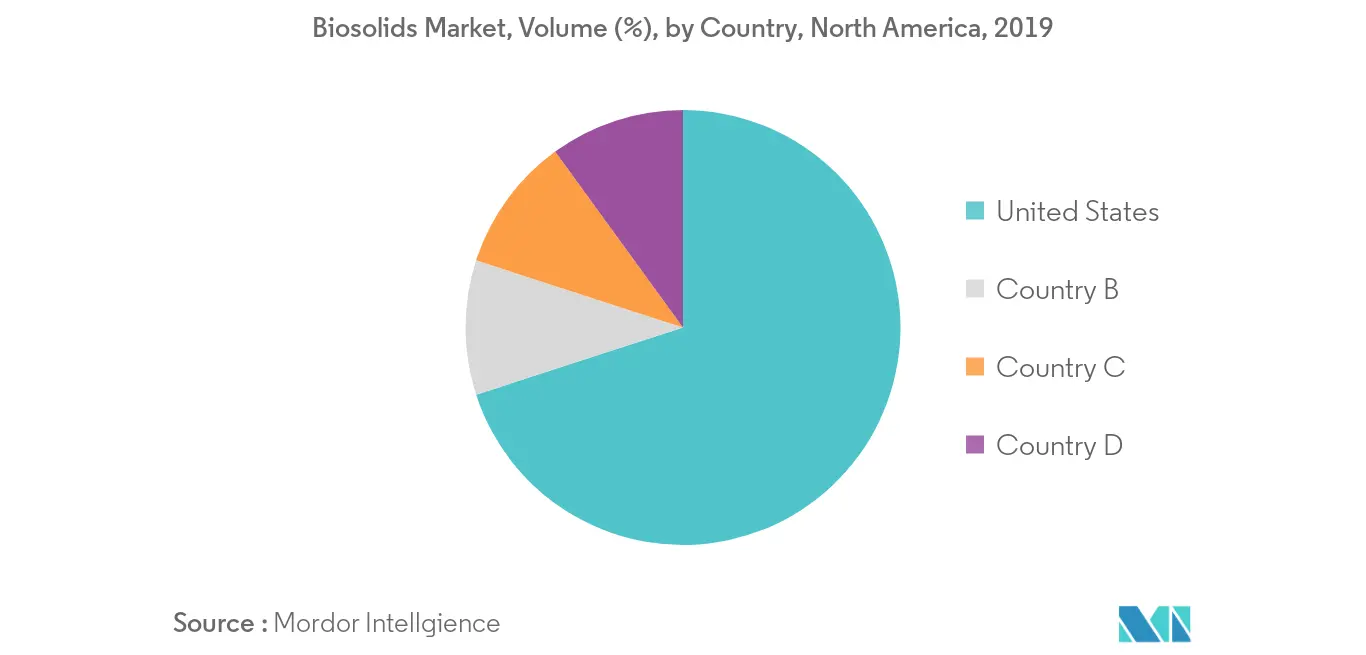Market Trends of North America Biosolids Industry
This section covers the major market trends shaping the North America Biosolids Market according to our research experts:
Agriculture Land Application to Dominate the Market
- The steadily growing population of the North American region is boosting the necessity for agriculture yields. However, the overall cropland area in the region has been declining in the past few years.
- Hence, there has been increasing demand for eco-friendly fertilizers like biosolids which can be used for both human crop production and animal crop production.
- Biosolids help in the reduction of fertilizer costs and provide many micronutrients essential for crop growth. Biosolids can be used on agricultural land, forests, rangelands, or on disturbed lands in need of reclamation.
- Big enterprises and big farmers are largely focusing on increasing their cattle farming activities and production of meat products. This, in turn, is augmenting the demand for animal crop production, which is providing an impetus to the application of biosolids as fertilizers for animal crop production.
- Hence, owing to such factors agricultural land is expected to be the dominating application area for the market studied.

United States to Dominate the Market
- In North America, United States is the largest economy in terms of GDP. The growth rate of the GDP in the United States was 2.9% in 2018 and 2.3% in 2019. The trade war with China has a significant impact on trade. Moreover, the COVD-19 pandemic is estimated to have a huge impact on the economy, as GDP contracted by 5.1, twice more than a drop in 2009.
- The United States is the most affected country due to the coronavirus with 3.3 million cases and 135 thousand deaths. The restriction on movement and lockdown had led to the closure of many businesses and others were affected by the crippled supply chain. However, the growth is expected to pick up pace in the latter part of the forecast period.
- In United States, there are stringent environmental regulations to be followed for sludge disposal, this has led to the proper and effective treatment of wastewater from various sources.
- Moreover, there are about 16,000 publicly owned treatment works (POTWs) which serve about 75% of the total population by treating more than 120 giga litres of water everyday. There POTWs are generally owned by the local government, to treat domestic sewage. The Clean Water Act by United States manages and regulates all the activates related to such water treatment.
- Solids obtained after sludge treatment cause severe harm to the environment when landfilled or incinerated, biosolids provide an extremely efficient alternative as they can be used as a fertilizer by using treating the left over by simple chemical and physical process.
- POTWs generate over 8.5 million tons (dry weight) of sludge annually. Sludge requires significant energy to treat and about one-third of total electricity use by a wastewater treatment system. Biosolids are generated during wastewater treatment processes and are need to meet the US EPA 40 CFR Part 503 regulations.
- However, biosolids can be beneficially used after stabilization, which kills pathogens and decomposing vector attractive substances. The growing awareness about the harmful impact of hazardous chemical fertilizers have led the consumers shift to biosolids and the growing benefits of organic good is boosting the market.
- Furthermore, it is estimated that 11.1% household face food insecurity and the current food production is unable to reach the food needs of the growing population. However, the decrease in cultivated land is serving any purpose. There is a drop of about 0.3% of the total cultivated land in 2019 compared to the previous year.


